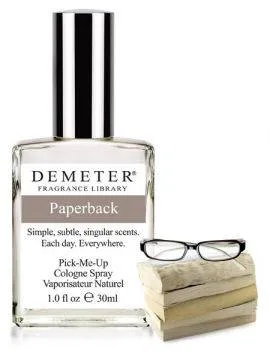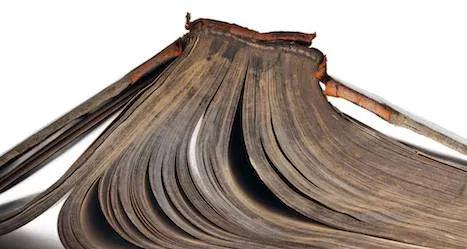That secondhand bookstore smell is catnip to bookworms. And as a card carrying member of that order, I react to it like a cartoon character cat does when it smells mouse. Like Homer does for donuts.
Mmm, good. I would apply “used paperback” to my pulse points. No, I wouldn’t. But I would scent my beach house with it, had I a beach house. (Still looking for a beach read?
Here are the best of 2018.)

THE chemistry BEHIND THAT USED BOOKSTORE SMELL
The New York Times recently
researched thrift store fragrance. “We all know it, that musty, grandma’s attic-y smell that licks your nostrils the moment you cross the threshold of any vintage, consignment or used clothing store, no matter how high- or low-end.”
If “thrift store clothing” is the ambrosial fragrance of the thrift gods (Reduce, Recycle and Reuse), then “that secondhand bookstore smell
” is their nectar.
The secondhand bookstore also has that musty, attic-y smell, but
better. Because it’s less animal? More vegetable? Mineral-y camphor, 1930s wool carpet in the best way? Read
The Quest to Better Describe The Scent of Old Books from
The Smithsonian.
The bread-y funk of a used bookstore’s scent of elegant decay and beautiful mildew is that of
people soils, sweat, tears, skin. But unlike its thrift, consignment and vintage clothing store cousins, that used bookstore smell is punctuated by the hot, dry, desert smell of
print. Ink on paper. Old glue. The slow rotting of books; that is how
a perfumer captures the scent of a library.
DIY THe fragrance of USED BOOKSTORE
How is that dusty, old-fashioned, secondhand bookstore smell achieved?
Easy. To two hundred pages of ink on paper: add heat, add time, and, under strict research conditions, perhaps drop it once it twice into a bathtub and break its gluey spine to dry it on a steam-heat radiator modeled after the one in my 1993 dorm room. Then have lots of people who have just eaten Cheetos thumb it. Then stick it in a winter mitten. Do this a thousand times over, and then add the hot fog of the coffee-breath of near-sighted bargain hunters.
“Duh. Mom, you are trying so hard,” my teenage kids say. “Secondhand bookstores just smell
the opposite of new.” So how would
you describe that secondhand bookstore smell?












